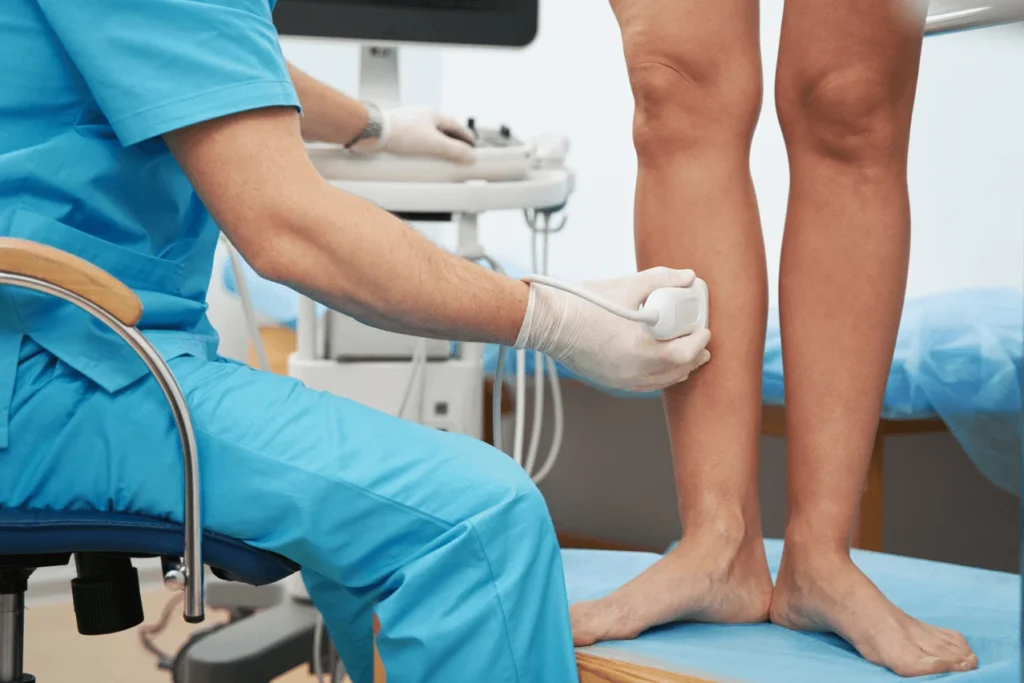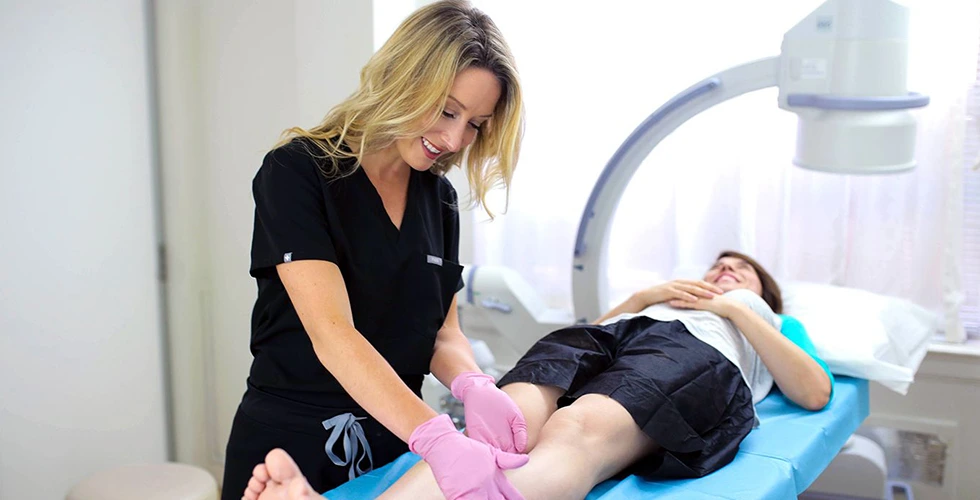Spider veins: causes, risk factors, and prevention
Spider veins are small, thin veins visible through the skin and often appear red, purple, or blue. They are often found on the face and legs and are more common in women than in men. So, what causes spider veins on the legs, and what are the risk factors for developing them?
What are spider veins?
Spider veins, also known as telangiectasias, are small veins visible through the skin and often resemble a spider’s web. They are usually less than 1 millimeter in diameter and are found close to the skin’s surface. While they can occur anywhere on the body, they are most common on the face, legs, and ankles. Spider veins are often harmless but can also be symptomatic of underlying chronic venous insufficiency, a dangerous medical condition.
What’s the root cause of spider veins?
The root cause of spider veins is often chronic venous insufficiency. This occurs when the veins in the legs cannot effectively pump blood back to the heart, causing blood to pool in the veins. Healthy veins contain valves that allow blood to flow toward the heart but not backward due to gravity. Gravity forces blood to flow backward and accumulate in the leg veins when the vein valves malfunction. Over time, this can lead to the development of spider veins.

Why do spider veins occur on the legs?
Gravity plays a role in the development of spider veins on the legs. When we stand or walk, the blood in our veins has to work against gravity to return to the heart. This is especially true for the veins in our legs, which are the furthest from the heart.
In healthy veins, the blood can flow smoothly and easily back to the heart thanks to the presence of valves. These valves act like one-way doors, allowing blood to flow in only one direction. However, if the valves become damaged or weakened, they may not function properly, causing blood to flow back down the vein instead of returning to the heart. Over time, this can lead to spider veins on the legs.
What are the risk factors for spider veins?
Several risk factors can increase the risk of spider veins in your legs:
- Age: Spider veins are more common in people over 50.
- Gender: Women are more likely to develop spider veins than men.
- Pregnancy: Pregnancy can increase the risk of developing spider veins due to the increased blood flow and pressure in the veins.
- Hormonal changes: Hormonal changes, such as those that occur during menopause, can also increase the risk of developing spider veins.
- Standing or sitting for long periods: Prolonged standing or sitting can increase the risk of developing spider veins, as it puts added pressure on the veins in the legs.
- Obesity: Being overweight can also increase the risk of developing spider veins, as it puts added strain on the veins in the legs.
- Family history: If you have a family history of spider veins, you have a higher risk.
Can spider veins turn into varicose veins?
Spider and varicose veins are both types of veins visible through the skin, but they are not the same. Spider veins are small, thin veins, usually less than 1 millimeter in diameter and are found close to the skin’s surface. They often resemble a spider’s web and can be red, purple, or blue. Varicose veins, on the other hand, are larger, swollen veins, usually more than 3 millimeters in diameter, and are found deeper beneath the skin. They are often bumpy and twisted and may bulge out from the skin.
So, can spider veins turn into varicose veins? The short answer is no; spider veins cannot turn into varicose veins. While they may appear similar, they are caused by different factors and require different treatment approaches.
What happens to untreated varicose veins?
Varicose veins are caused by chronic venous insufficiency, which occurs when the veins in the legs cannot effectively pump blood back to the heart, causing blood to pool in the veins. If left untreated, varicose veins can lead to several medical problems, including:
- Swelling in the legs: Varicose veins can cause swelling in the legs, ankles, and feet due to the pooling of blood in the veins.
- Skin changes: Varicose veins can cause the skin around the veins to become thin, dry, and itchy. In severe cases, the skin may develop sores or ulcers.
- Blood clots: Varicose veins can also increase the risk of developing blood clots in the legs, which can be dangerous if they travel to the lungs.
- Leg pain: Varicose veins can cause aching, throbbing, or cramping in the legs.
How to minimize the risk of spider veins?
While there is no surefire way to prevent spider veins, there are a few steps you can take to minimize your risk:
- Stay active: Regular exercise can help improve circulation in the legs and reduce the risk of developing spider veins.
- Avoid standing or sitting for long periods: Prolonged standing or sitting can increase the pressure on the veins in the legs, so try to take breaks and walk around frequently.
- Wear compression stockings: Compression stockings can help improve circulation in the legs and reduce the risk of developing spider veins.
- Maintain a healthy weight: Being overweight can increase the strain on the veins in the legs, so maintaining a healthy weight can help reduce the risk of developing spider veins.
- Avoid high heels: High heels can put added pressure on the veins in the legs, so try to wear comfortable, low-heeled shoes whenever possible.
Where can I get my varicose veins removed?
Maryland Vein Clinics is one of the best state-of-the-art medical centers specializing in vein treatments. Our vein clinic is led by board-certified vein doctors with advanced training in vascular imaging and the latest and safest minimally invasive spider vein and varicose vein treatments. If you’re in the Beltway, you can find our vein clinics at 10215 Fernwood Rd, Suite 301, Bethesda, Maryland, just outside Washington, DC.
Please schedule an appointment at your nearest vein clinic in Maryland.
Don’t ignore your symptoms.
At Vein Treatment Clinic, we’re here for Maryland patients with expert vein doctors and convenient locations close to home.
Whether you’re in Bethesda, Bowie, or Maple Lawn, you’ll find advanced care for spider veins, varicose veins, and chronic venous insufficiency at our clinics.
Patients across Maryland trust our Ivy League–trained, board-certified specialists for minimally invasive treatments that improve circulation, relieve pain, and restore confidence. In Maryland, our team includes Dr. Kamran Saraf and Dr. Lisa Alford, two highly experienced vein experts dedicated to providing personalized care.
Book your consultation today at the clinic nearest you.





